
Yangzage 羊杂割 is a street food common in the northern region of Shanxi 山西 in China. It consists of lamb offal and lamb meat, served in a creamy broth with some cellophane noodles. It is a common breakfast food, eaten together with a biscuit-like breadroll called Ganmianbing 干面饼. Shanxi borders (inner) Mongolia, looking at the recipe below, you will see that the dish represents the cultural fusion of Han and Mongolian cultures.
History of Yangzage (13th century AD)
According to legend, the dish was specifically developed for the mother of Kublai Khan (reigned AD1260-1294; grandson of Genghis Khan). Kublai Khan was the founder of the Chinese Yuan dynasty. He considered China his main base and ruled as a Chinese emperor, not a Mongol – which was why he adopted the Chinese court and language. And he placed a lot of trust in Chinese medicine, one of the reasons was due to his powerful mother.
On the way back to China from the Mongolian steppes, Kublai Khan’s mother the (Nestorian Christian) Empress Sorghaghtani Beki fell ill in Shanxi. Local physician Xu Guozhen 许国桢 treated her back to health. Xu thus gained the trust of the Empress herself and rose to the rank of imperial doctor.
Back in those days, the court is ambulatory and the emperor’s court moved around with him. So did the imperial doctor and his family. Xu’s mother, Han, noticed that it was a great pity that the Mongols ate only the lamb but threw the innards away. She created a dish, combining the offal and the meat, and served it to the Empress. The Empress loved it, and gave it the name ’Yangzalao’ 羊杂酪 – meaning ’mixed lamb cream’.
From then on, the dish began to be spread throughout Shanxi, from the 13th century until today.
The 3 Variations
There are three main varieties of Yangzage in Shanzi: the Northern variety in Datong 大同 (which is considered the roughest), the Central variety in Taiyuan 太原 (the most ‘medicinal’) and the Southern variety in Quwo 曲沃 (the most delicate in terms of taste and recipe). The recipe I am presenting is the Taiyuan-style Yangzage. The reason being that it has another story behind its recipe, which makes it also the most nutritious.
The Secrets of Doctor Fu Shan 傅山 (17th century AD)
Han Chinese were once again ruled by northern invaders in the 17th century – this time by the Manchurians, who established the Qing dynasty in China. But the Han resistance was constantly active in plotting to drive out the invaders. One such anti-Manchurian resistance fighter was physician and herbalist Doctor Fu Shan 傅山. Fu practised in the city of Taiyuan 太原 , in Shanxi, and he left behind an array of writings on philosophy, medicine, poetry, Buddhism and is considered one of the six greatest thinkers of the Chinese Qing period.
Fu was also interested in medicinal cuisine. As a herbalist, he created the awkwardly-named dish – ’Tounao’ 头脑 (meaning “brain”) for his mother – still eaten in Taiyuan today as a tonic. It is made out of lamb, lamb bone marrow, wine residue, lotus roots, fried flour, shanyao, huangqi, liangjiang amongst other herbs. The fact that she lived till 84 (in the 17th century that was a big deal) attests to the potency of his recipe!
As a resistance fighter, Fu thought the inhabitants of Taiyuan should be as strong as possible to fight against the Manchurians. And he thought of a brilliant plan: because Taiyuan inhabitants all ate Yangzage for breakfast (they still do), he would put a tonic formula in the Yangzage to make them stronger. There was a popular Yangzage stall run by a man named Li. Fu passed his formula to Li who added the ingredients to his Yangzage recipe. Soon enough, Li’s business grew and the recipe spread and it became the variety of Yangzage eaten in Taiyuan today.
With this background, you must be quite intrigued by the recipe, plus this is the ONLY recipe of Yangzage written in English!
Ingredients:
- 1kg lamb with bones
- 200g lamb offal (replace with cow’s if not available; cleaned thoroughly with plain flour and water)
- 1 piece lamb’s blood (replace with pig’s blood if not available)
- 10cm ginger
- 3 stalks spring onions
- 3 stalks coriander
- 3 tbs Sichuan peppercorn
- 5g Danggui 当归 (Angelica sinensis)
- 5g Huangqi 黄芪 (Astragalus membranaceus)
- 2 small portions cellophane noodles
- Chinese chilli oil
- Shanxi vintage vinegar 山西老陈醋
- White pepper powder and salt
Servings: 4 persons
Instructions:
Step 1:
- Clean your lamb chops and pat dry.
- Put your lamb chops and lamb offal in a pot, fill with water. Bring to boil on HIGH heat.
- Once the water boils and white foam rises to the surface, turn off the fire.
- Take the meat out and rinse with tap water, and discard whatever water that is in the pot.
Step 2: The Making of Soup A
- Put your meat into the pot and fill the water until it just covers the meat.
- Add into your pot: 3cm ginger (flattened with a knife), bottom half of 1 stalk of coriander including the root, bottom half of a spring onion, 1tbs of Sichuan pepper cracked in a mortar and a pestle.
- Cover and put on HIGH heat until it boils. Then let it simmer for 20 minutes on medium heat.
- Once done, the soup should look milky. Take out your meat (lamb and offal). Leave these on a plate.
- Pour the soup into another pot and set aside.
Step 3: The Making of Soup B
- Repeat Step 2 with a fresh pot of water but this time round, add sliced Danggui and sliced Huangqi.
- Boil until the soup is milky. Turn off the fire.
- Take out the lamb chops and put them on a plate. Separate the bone from the meat. Put the bones back into Soup B.
- Take out the offal and set them aside.
Step 4: The Making of Combined Soup A and B
- Now you should have Soup A, Soup B with bones. Pour Soup A into Soup B, add 3cm ginger, bottom half of 1 stalk of coriander including the root, bottom half of a spring onion, 1tbs of cracked Sichuan pepper.
- Let it simmer on medium-low heat for 30 minutes. Do NOT let it boil.
- Add salt and white pepper to taste.
Step 5: Preparation of the ingredients (while Step 4 is simmering away)
- Put your cellophane noodles in a large bowl and pour boiling water over it. Let it sit until it is soft.
- Bring to boil a pot of boiling water. Cut your lamb’s blood into 3cm cubes and put them in. Let it simmer until the cubes turn dark brown. Take them out and put them in a bowl of tap water. Set aside.
- Cut your offal into bite-size pieces and set aside.
- Cut your lamb meat into strips and set aside.
Step 6: Serving it
- Take out 4 serving bowls
- In each bowl, put lamb meat, lamb offal, lamb blood, a few strands of noodles.
- With the soup still simmering on fire, pour the soup into the bowl and let the soup warm up the ingredients. Add just the soup, not the bones etc in the soup.
- Garnish liberally with spring onions (the top greenish half, chopped) and coriander (the leafy top half, chopped) and add a dash of Shanxi vintage vinegar, red chili oil and white pepper before serving.
Tips:
- Do not add salt until the last minute during the cooking process.
- High heat to get the milky effect and medium heat to get the taste out of the bones.
- Once the soups A and B are combined, keep it below the boiling point.
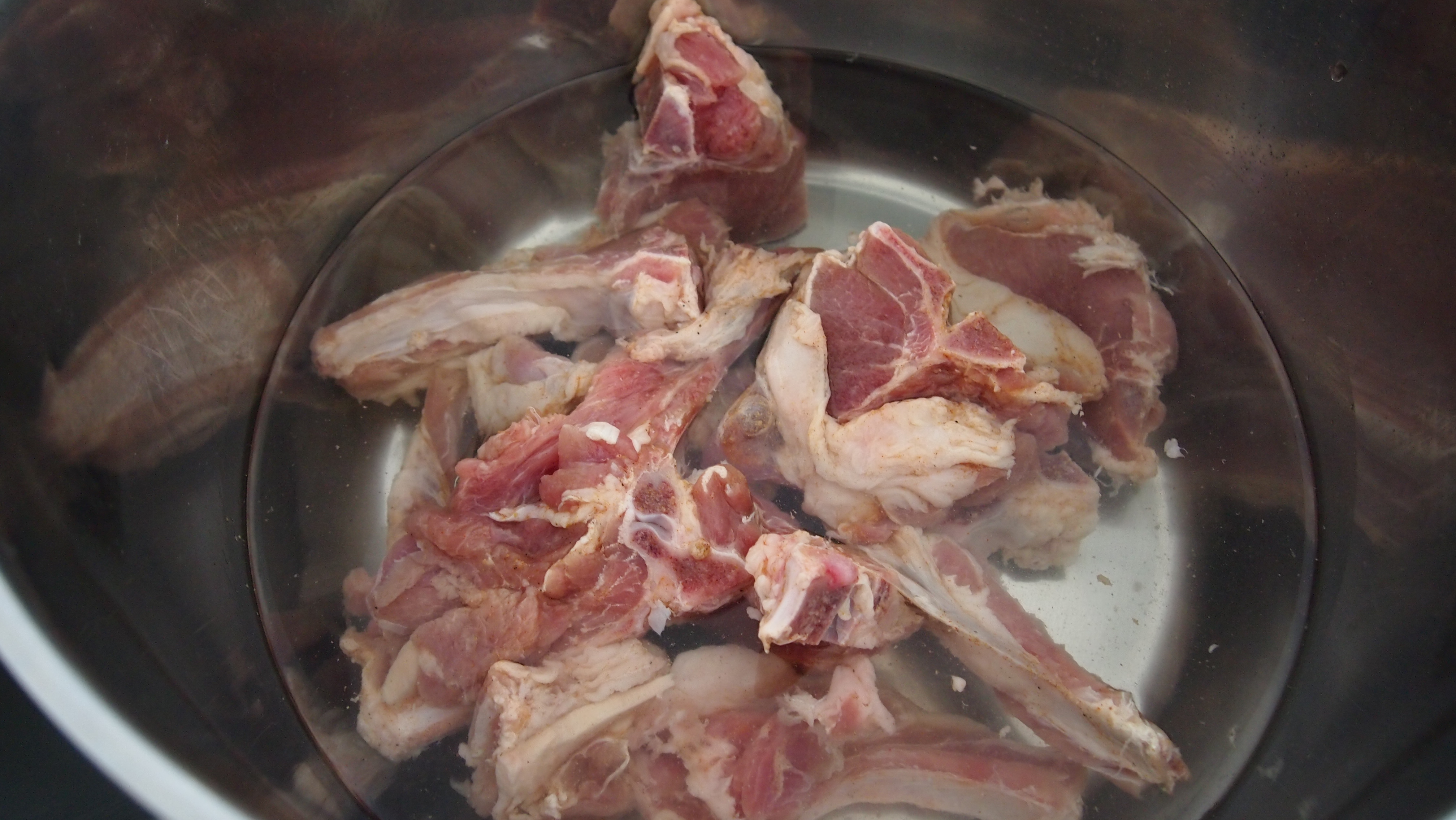

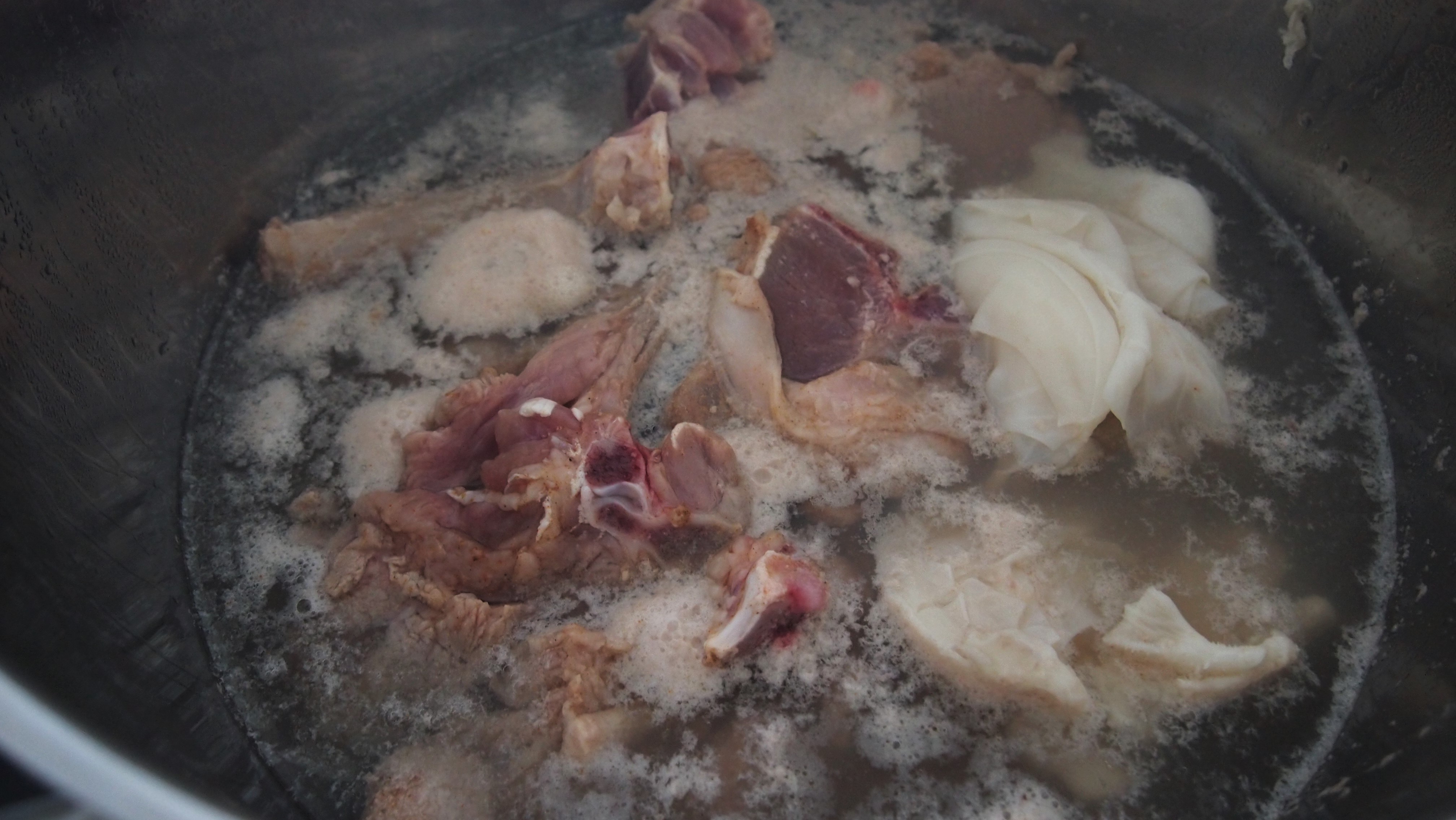
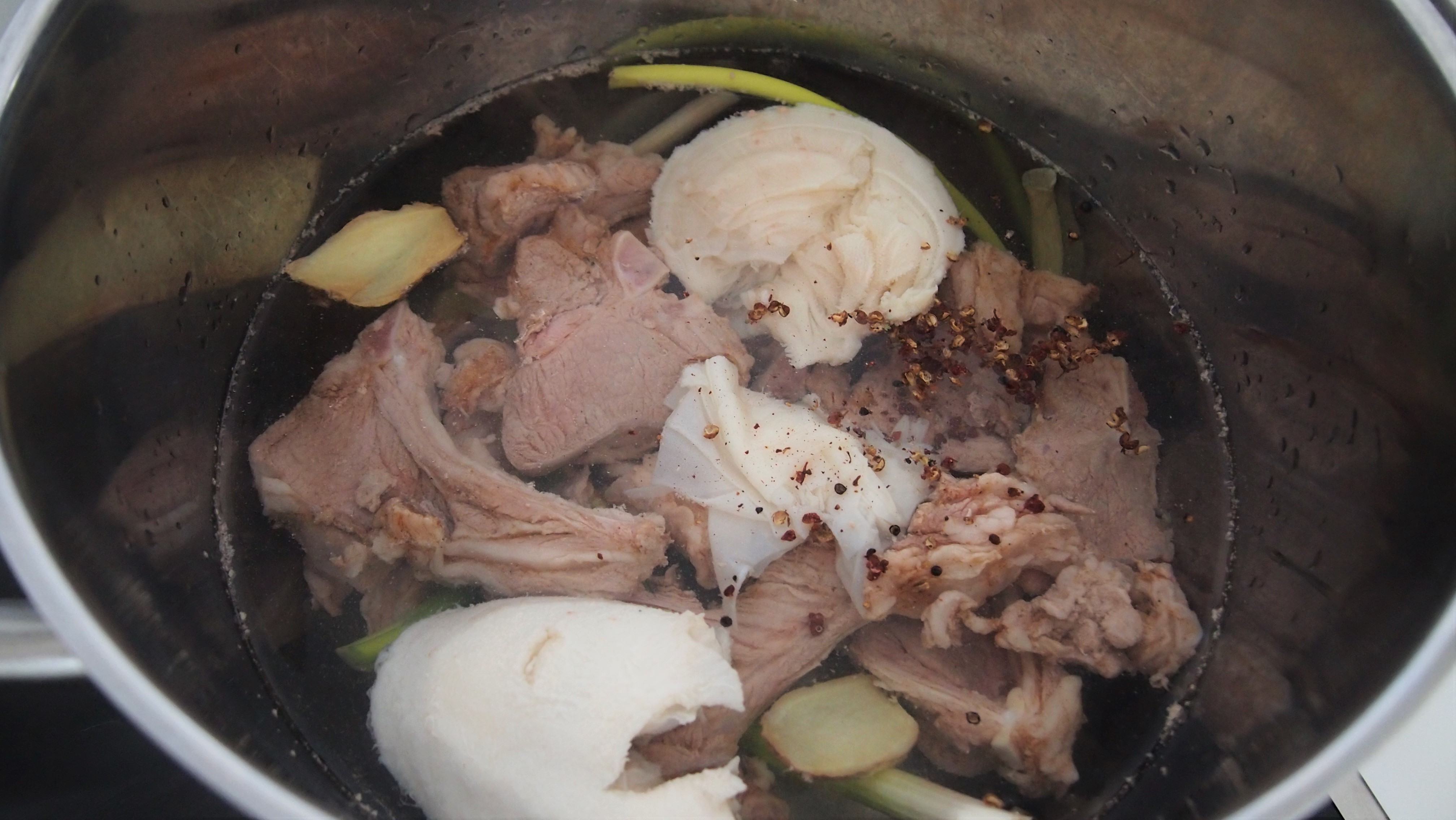
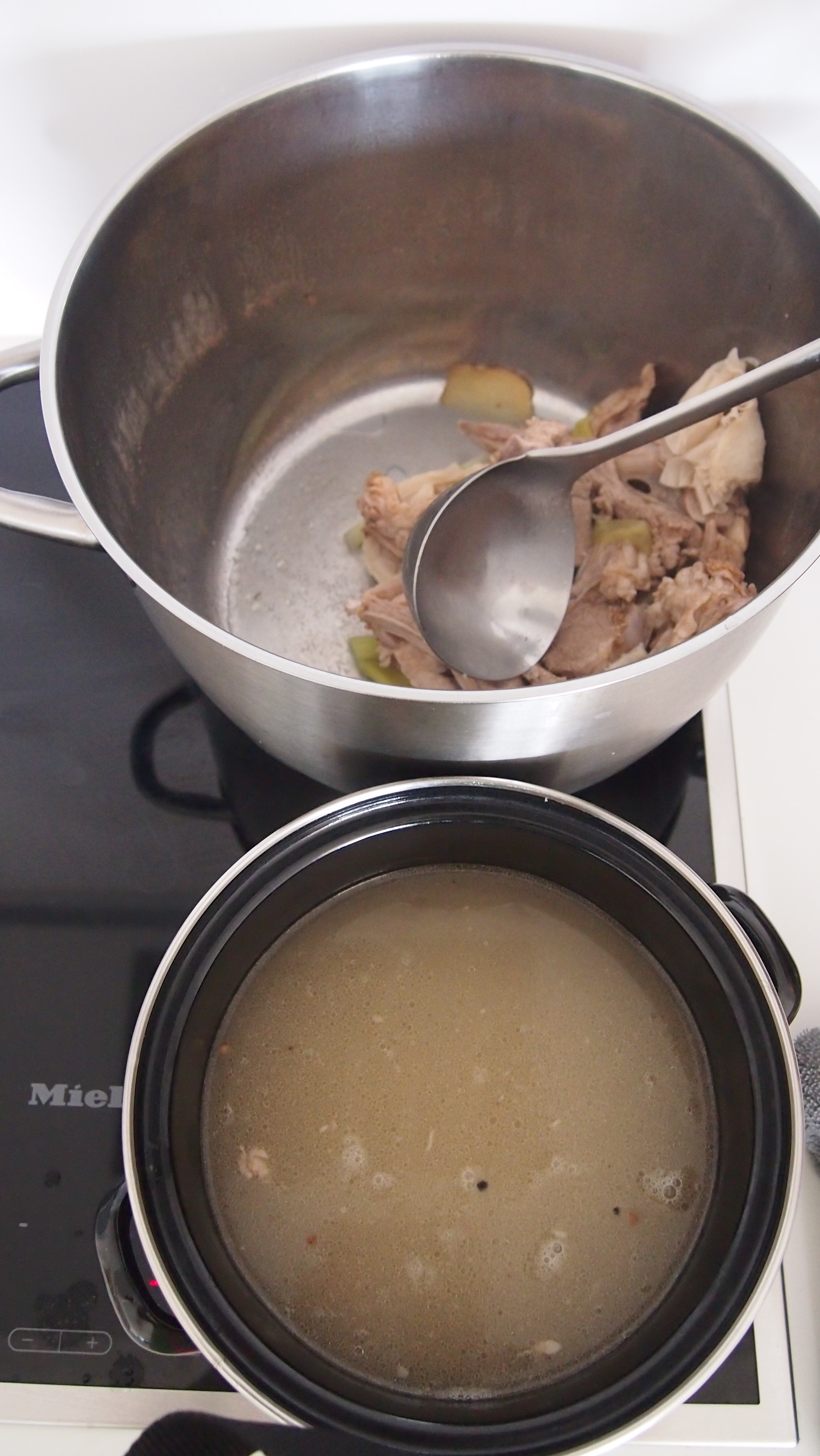
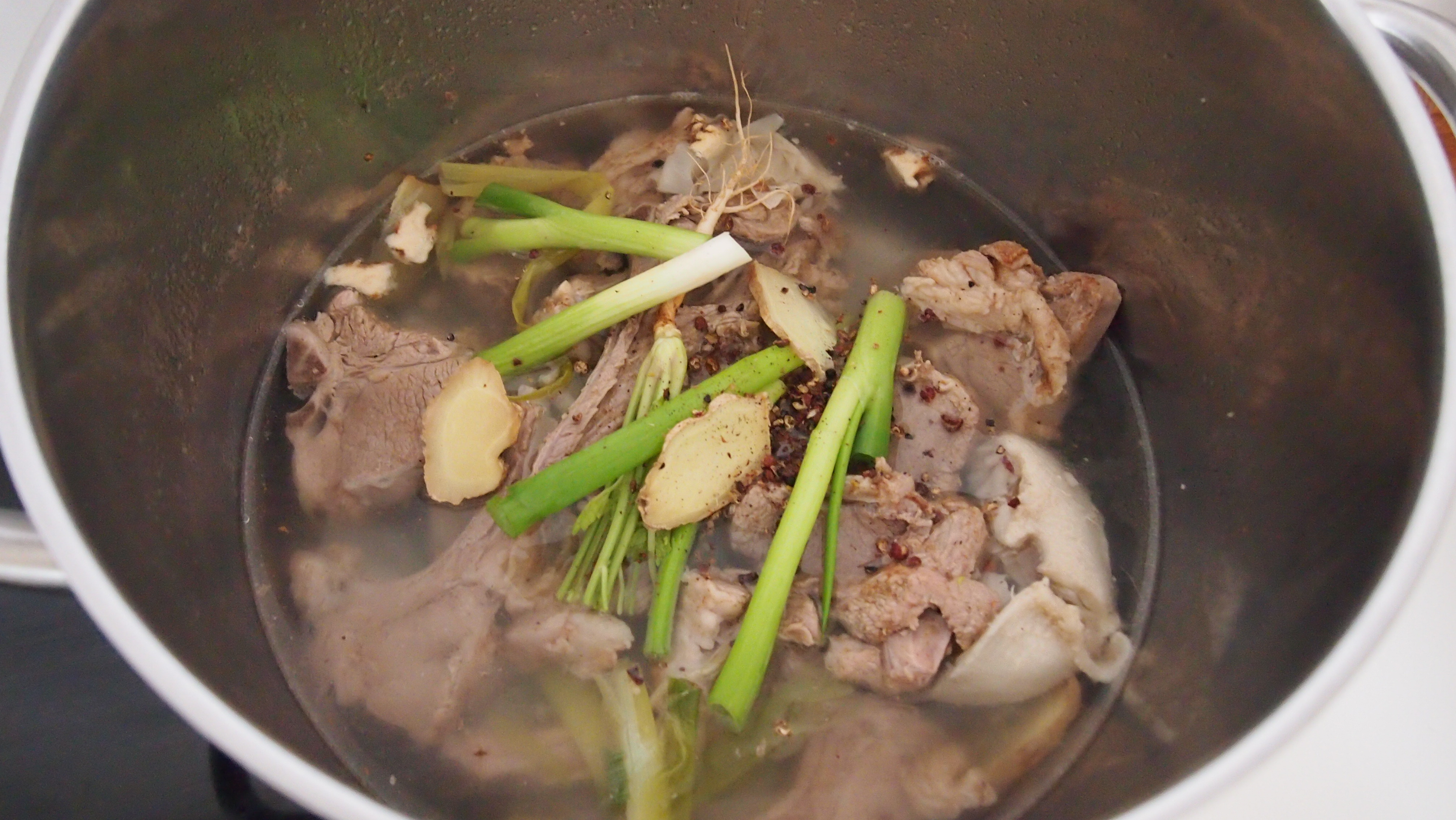
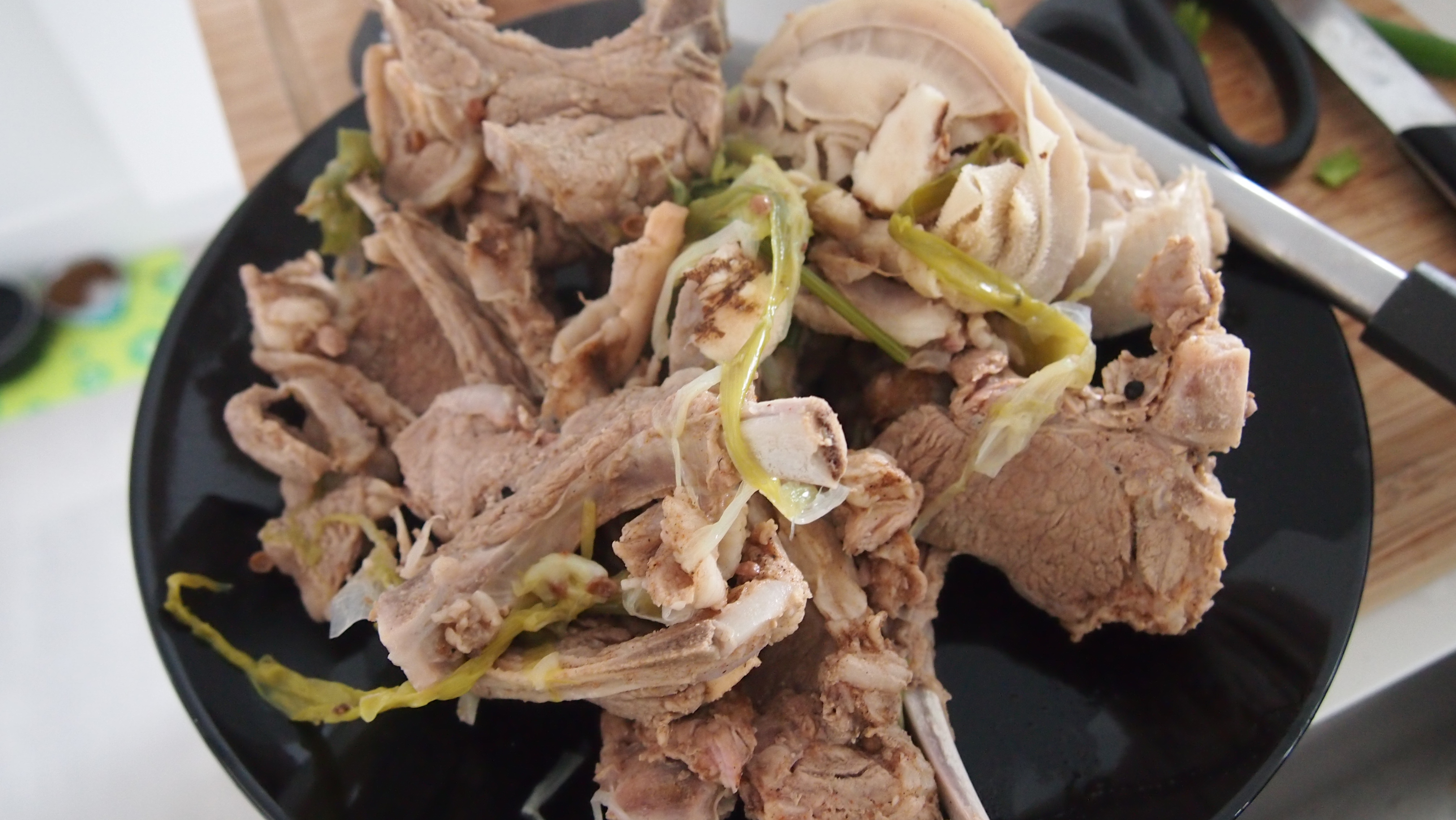

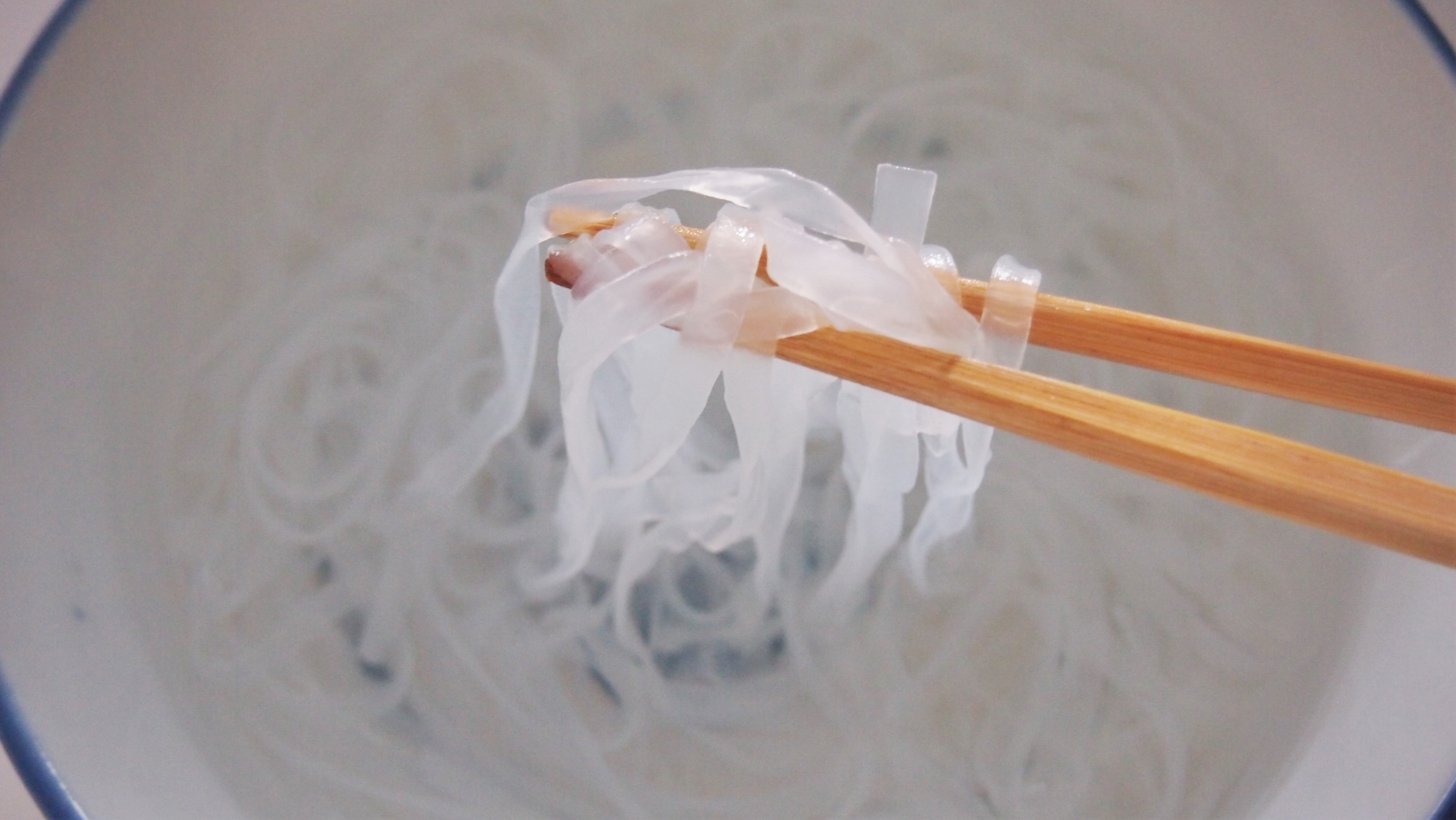


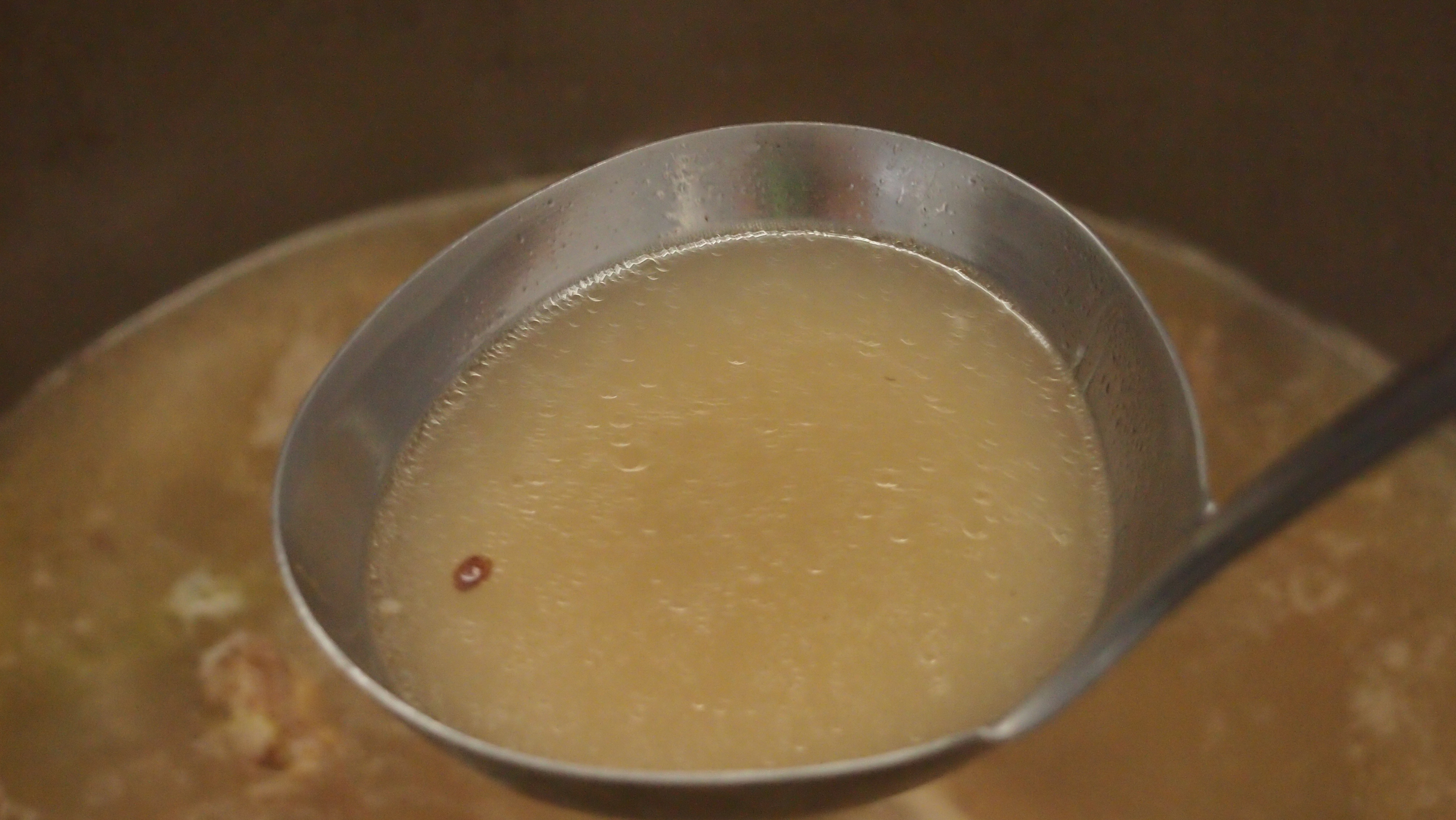


2 Comments